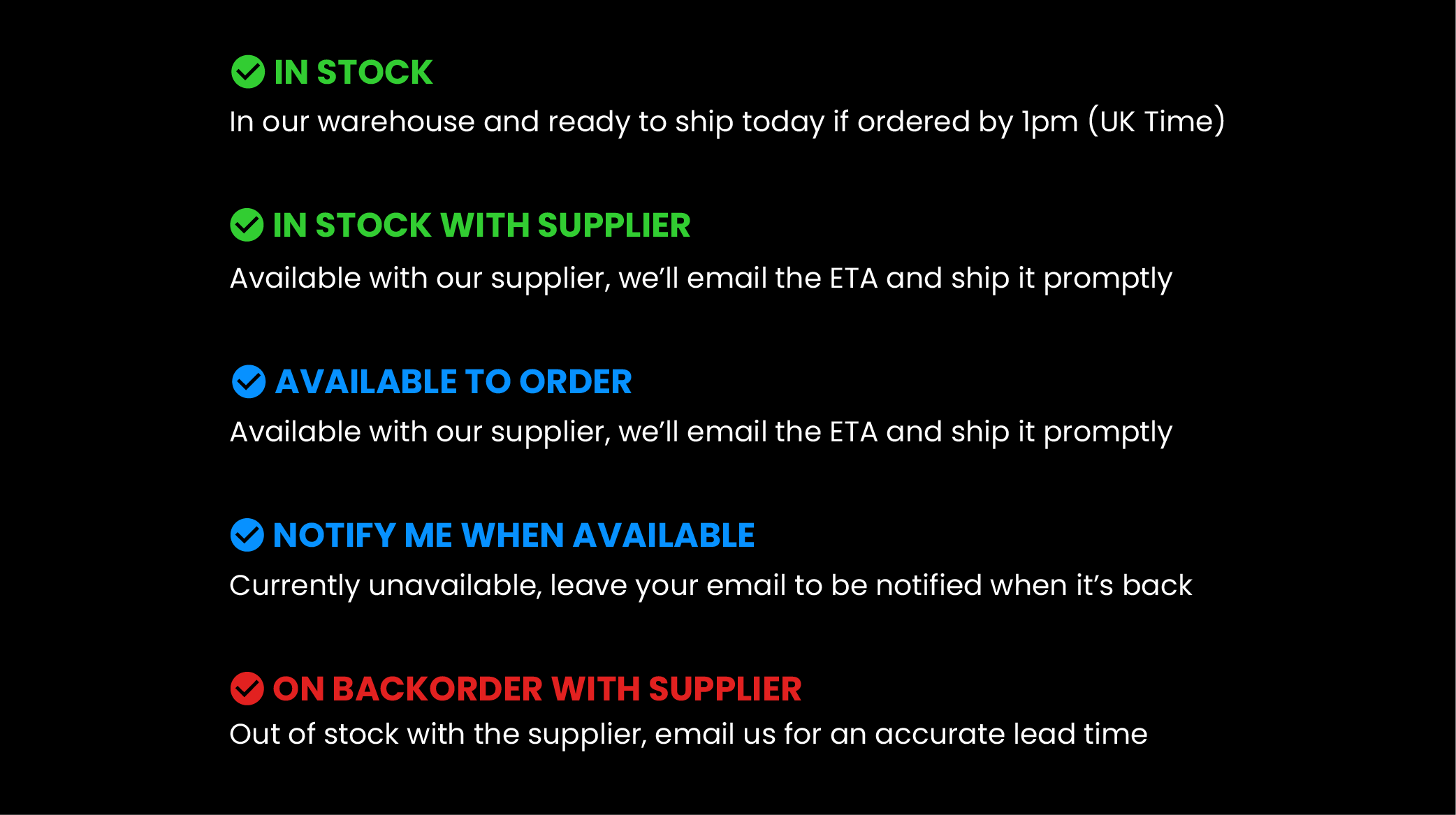-
Contact us with your order number to notify us of the return. Please ensure you pack the battery carefully with sufficient protective packaging. We will not be liable for any damage caused in transit.
- We will then charge and test the battery; we may also need to return some items to our suppliers for testing.
-
If the battery is faulty, (if applicable & subject to your warranty) we will issue refund or replacement.
-
If your battery is not faulty, we will send the battery back to you or we can safely dispose of the battery. Please note, you will be liable for any carriage costs incurred.
All specialist batteries (non-automotive) may need to be returned to the manufacturer for testing.
Please note we are unable to proceed with a warranty claim if the faulty battery has been disposed of prior to notifying us of a potential fault.
ML Performance are not responsible for any third-party claims resulting from a faulty item. The faulty item will be replaced but third-party losses will not be reimbursed.
For Safe Battery Use: Immediate Removal of Transit Bungs
To ensure optimal performance and prevent potential safety hazards, please remove the transit bungs from your battery immediately upon receipt. These small plugs, located on the battery are present for transportation purposes and must be removed before use or storage. Some batteries have these in red colour.
Failure to remove the transit bungs can:
Cause the battery to malfunction or swell.
Lead to potential risk of explosion.
Need Help? We're Here:
If you encounter any difficulties or have questions about the transit bungs, please contact our customer support team immediately.
IMPORTANT:
Damage caused to the battery due to failure to remove the transit bungs is not covered under any warranty.
Continued use of the batteries after receiving this notification signifies your acknowledgment and understanding of these important safety instructions.
BATTERY FREQUENTLY ASKED QUESTIONS


















